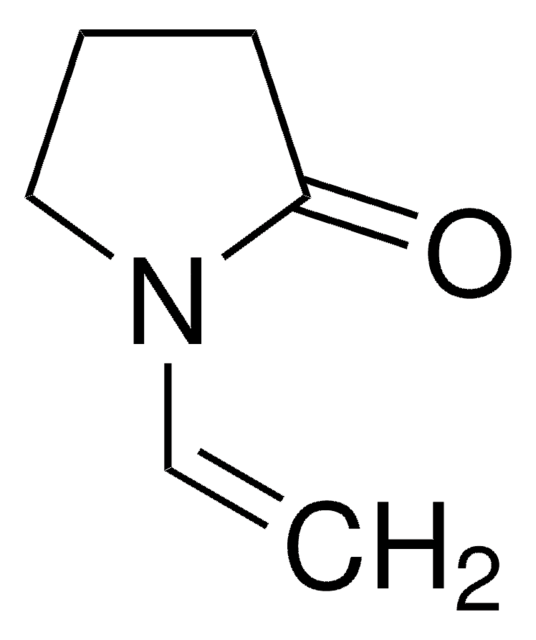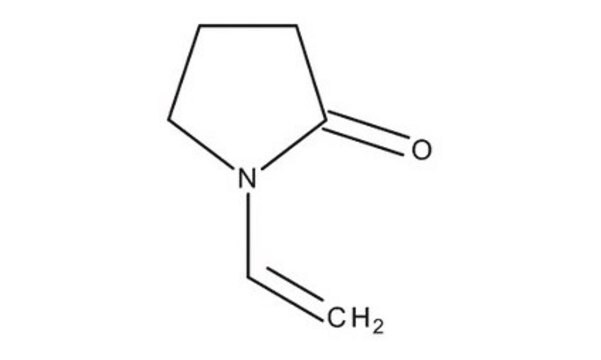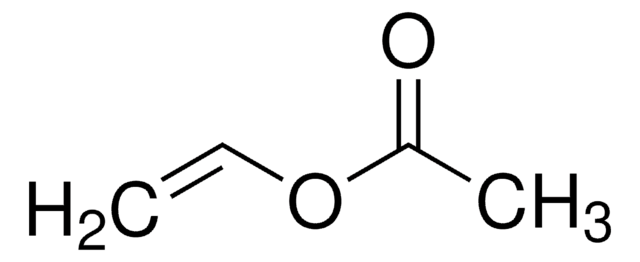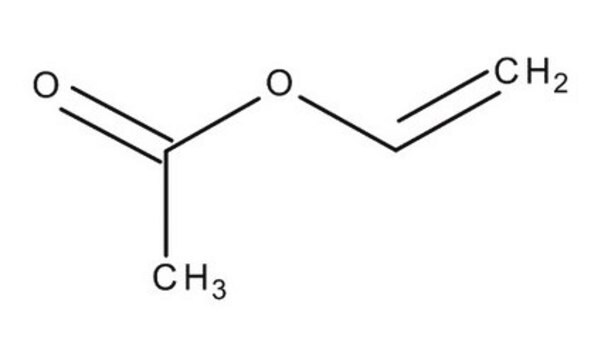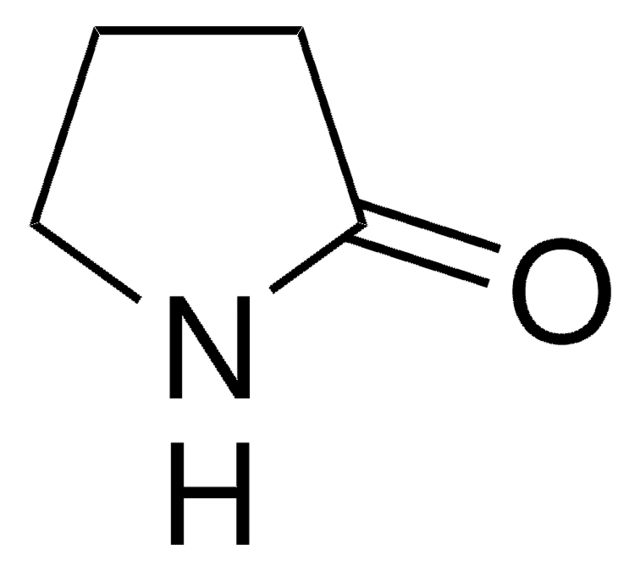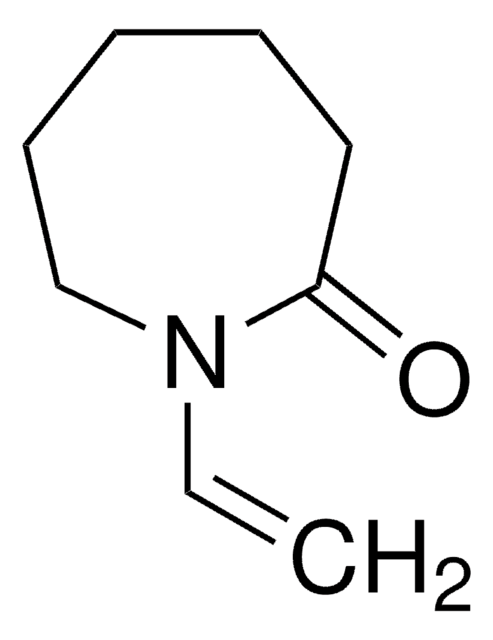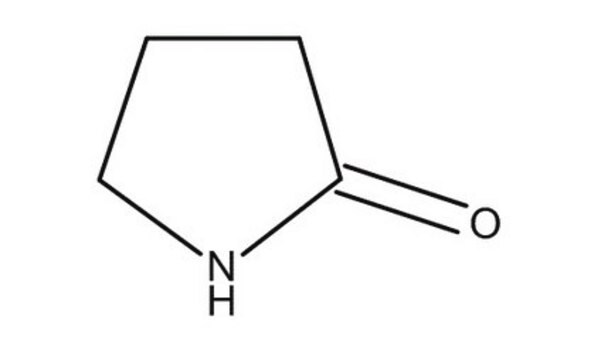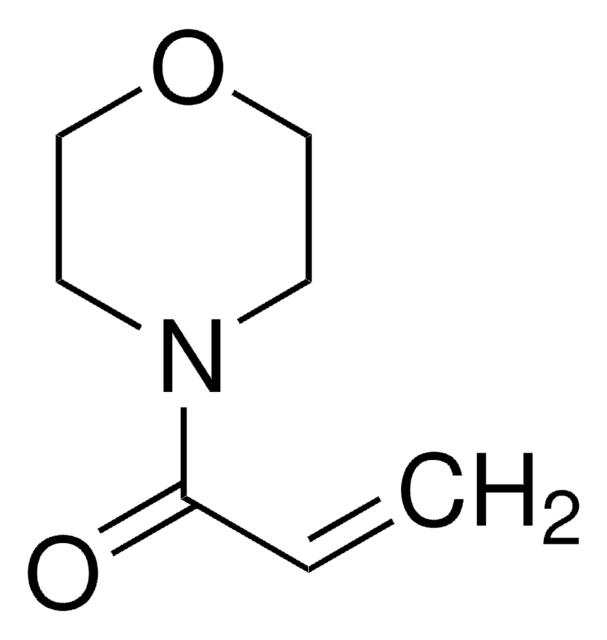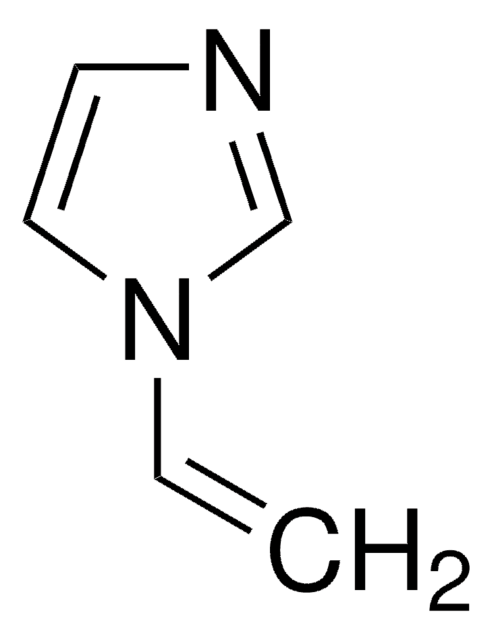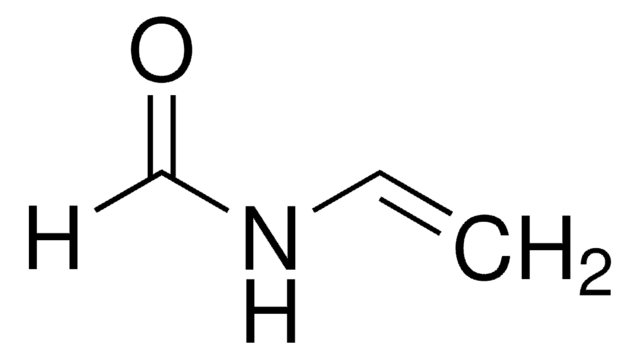V3409
1-Vinyl-2-pyrrolidinone
contains sodium hydroxide as inhibitor, ≥99%
Synonym(s):
1-Vinyl-2-pyrrolidone
About This Item
Recommended Products
vapor density
3.8 (vs air)
Quality Level
vapor pressure
0.1 mmHg ( 24 °C)
assay
≥99%
autoignition temp.
685 °F
contains
sodium hydroxide as inhibitor
100 ppm sodium hydroxide as inhibitor (added to bulk material)
expl. lim.
10 %
refractive index
n20/D 1.512 (lit.)
bp
92-95 °C/11 mmHg (lit.)
density
1.04 g/mL at 25 °C (lit.)
storage temp.
2-8°C
SMILES string
C=CN1CCCC1=O
InChI
1S/C6H9NO/c1-2-7-5-3-4-6(7)8/h2H,1,3-5H2
InChI key
WHNWPMSKXPGLAX-UHFFFAOYSA-N
Looking for similar products? Visit Product Comparison Guide
General description
Application
signalword
Danger
Hazard Classifications
Acute Tox. 4 Dermal - Acute Tox. 4 Inhalation - Acute Tox. 4 Oral - Carc. 2 - Eye Dam. 1 - STOT RE 2 - STOT SE 3
target_organs
Respiratory system
Storage Class
10 - Combustible liquids
wgk_germany
WGK 1
flash_point_f
203.0 °F - closed cup
flash_point_c
95 °C - closed cup
ppe
Eyeshields, Faceshields, Gloves, type ABEK (EN14387) respirator filter
Choose from one of the most recent versions:
Already Own This Product?
Find documentation for the products that you have recently purchased in the Document Library.
Customers Also Viewed
Articles
The manufacture of monomers for use in ophthalmic applications is driven by the need for higher purity, improved reliability of manufacturing supply, but ultimately by the need for the increased comfort, convenience, and safety of contact lens wearers. Daily wear contact lenses have the potential to fill this need for many customers; however, their widespread use is constrained by higher costs compared to weekly- or monthly-based lenses. New approaches that improve cost structure and result in higher quality raw materials are needed to help make contact lenses more affordable and accelerate growth of the contact lens market.
Our team of scientists has experience in all areas of research including Life Science, Material Science, Chemical Synthesis, Chromatography, Analytical and many others.
Contact Technical Service